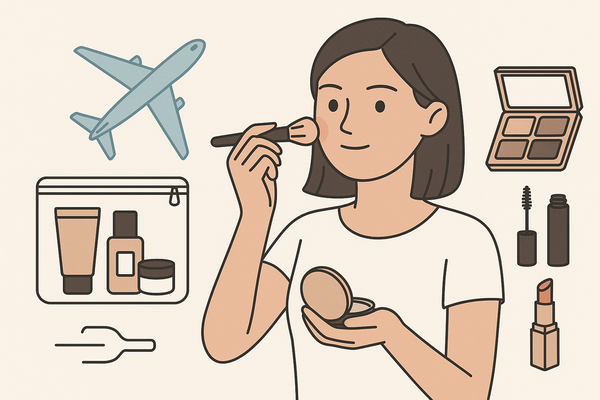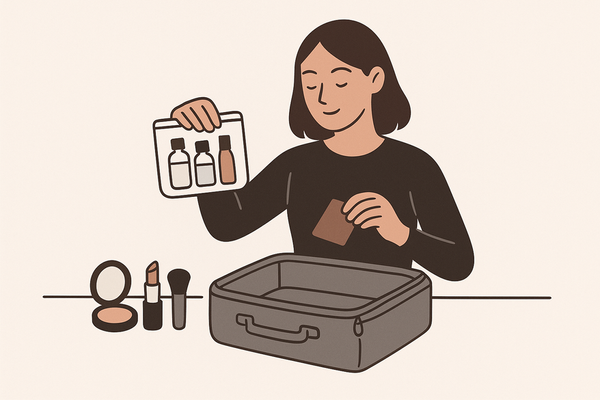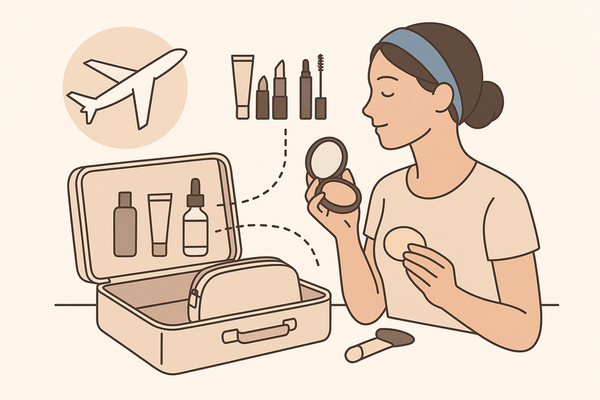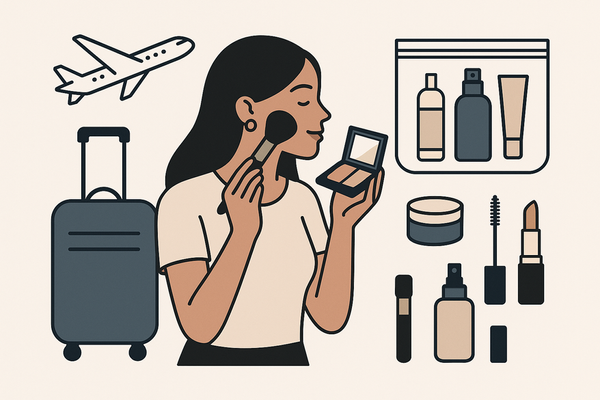DIY Makeup Hacks: Lipstick, Lip Gloss, Brush Cleaner & Powder Repair
Discover DIY makeup hacks to make lipstick at home, create custom lip gloss, clean brushes and fix broken powder compacts, saving money and reducing waste.
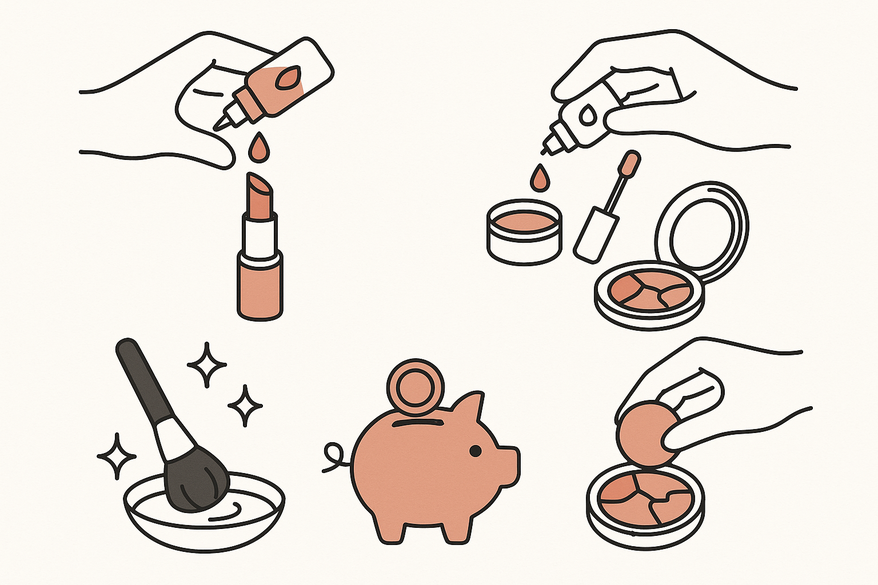
Estimated reading time: 8 minutes
Key Takeaways
- Formulate natural lipstick using beeswax, oils, and pigments.
- Create custom lip gloss for your ideal tint, shine, and nourishment.
- Maintain hygienic brushes with a simple homemade cleaner.
- Rescue broken powder compacts to minimize waste and extend product life.
Table of Contents
- DIY Makeup Hacks Overview
- Make Lipstick at Home
- Create Custom Lip Gloss
- Homemade Brush Cleaner
- Fix Broken Powder Compact
- Conclusion
DIY Makeup Hacks Overview
What are DIY makeup hacks? They’re cost-effective, personalized beauty solutions that empower creativity, reduce packaging waste, and save money. By repurposing common ingredients, you can craft unique shades and textures, extend the life of your collection, and experiment without commitment.
- Personalization: Craft shades and textures that match your style.
- Cost savings: Cut back on store-bought makeup expenses.
- Sustainability: Reduce packaging waste and landfill makeup (learn more about clean and eco-friendly DIY beauty).
- Experimentation: Test unique formulas without large commitments.
Make Lipstick at Home
Goal: Formulate safe, natural lipstick at home using beeswax, oils, and pigments.
Ingredients & Tools:
- 2 tbsp beeswax + 1 tbsp coconut or olive oil
- Cosmetic-grade pigment, crushed old lipstick, eyeshadow, or food coloring
- 1–2 drops essential oil for scent (peppermint, lavender)
- Small heat-safe container, double boiler or small pot, empty lipstick tube or jar, stirring utensil
Step-by-Step Instructions:
- Combine Base
Weigh and mix beeswax with oil in a heat-safe container. - Melt on Low Heat
Gently heat until fully melted, stirring occasionally. - Add Pigment
Stir in pigment or crushed powder until uniform. - Scent & Pour
Add essential oil, stir, and pour into your tube or jar. - Solidify
Let cool and set for 20–30 minutes at room temperature.
Customization Tips:
- More oil = creamier finish; more wax = firmer stick.
- Blend multiple pigments or old lipstick bits (see our lipstick shade finder guide for tips).
- Add a pinch of cosmetic-grade mica for shimmer.
Safety & Quality Best Practices:
- Use FDA-approved, cosmetic-grade pigments.
- Sterilize containers and tools before use.
- Perform a patch test for sensitivity.
- Label with date and ingredients.
Create Custom Lip Gloss
Goal: Blend a personalized gloss with your ideal tint, shine, and nourishment.
Ingredients & Tools:
- 1 tbsp petroleum jelly or natural alternative (shea butter)
- Tiny pinch of pigment, crushed eyeshadow, or food-safe color
- ¼ tsp vitamin E oil, ¼ tsp almond or jojoba oil, optional mica or glitter
- Small bowl, spatula or spoon, lip gloss tube or jar
Step-by-Step Instructions:
- Soften Base
Warm petroleum jelly or butter until soft. - Mix in Tint
Stir in your chosen color until even. - Add Nourishers
Blend in oils for moisture. - Incorporate Shine
Add mica or glitter if desired. - Transfer & Cool
Spoon into container; let set for 10–15 minutes.
Personalization Pointers:
- Boost shimmer with extra mica or glitter.
- Swap petrolatum for shea or cocoa butter for a petroleum-free formula.
- Use tinted oils (rosehip, cranberry) for deeper color.
- Add essential oils (orange, mint) for scent.
Homemade Brush Cleaner
Importance: Clean brushes prevent bacteria buildup, breakouts, and uneven makeup application.
Ingredients & Tools:
- 1 part gentle dish soap or baby shampoo
- 1 part olive oil
- Bowl, towel, lukewarm water
Step-by-Step Instructions:
- Prep Solution
Mix soap (or baby shampoo) with olive oil in a bowl. - Swirl Brushes
Dip bristles and swirl for 10–15 seconds. - Rinse Thoroughly
Rinse under lukewarm water until clear. - Reshape & Dry
Squeeze out water, reshape bristles, and air-dry flat.
For more on maintaining pristine brushes, check out our comprehensive guide how to clean makeup brushes.
Fix Broken Powder Compact
Common Problem: Dropped compacts crack and create crumbs.
Materials Needed:
- Broken powder pieces in original pan
- 70% rubbing alcohol
- Spoon or spatula, paper towel
Step-by-Step Instructions:
- Crush & Fine-ize
Crush larger pieces into fine powder. - Add Alcohol
Drip 3–5 drops of alcohol to bind particles. - Press & Level
Press firmly to compact and smooth edges. - Dry & Set
Let air-dry for at least 24 hours. - Clean Excess
Wipe away residue before closing.
Maintenance & Prevention Tips:
- Store compacts in padded bags or compartments.
- Place a cotton pad or foam on top to absorb shock.
- Avoid dropping or heavy stacking.
Conclusion
These DIY makeup hacks empower you to:
- Create personalized lipsticks and glosses.
- Maintain hygienic brushes with a homemade cleaner.
- Repair cracked powder compacts for zero-waste beauty.
- Experiment with ingredients to find your perfect formula.
Final Call-to-Action
Share your creations in the comments and tag #DIYMakeupHacks on social media. Want more tutorials? Sign up for our newsletter and stay ahead of the beauty curve!
FAQ
- How long does homemade lipstick last?
Stored in a cool, dry place, homemade lipstick can last 6–12 months. Always label with the date. - Is DIY makeup safe for sensitive skin?
Use cosmetic-grade ingredients, sterilize tools, and perform a patch test before full application. - Can I use natural colorants in lip gloss?
Yes—choose food-safe colors or cosmetic pigments and ensure they’re FDA-approved for lip use. - How often should I clean my makeup brushes?
For best hygiene, deep-clean weekly and rinse lightly after each use if possible.

